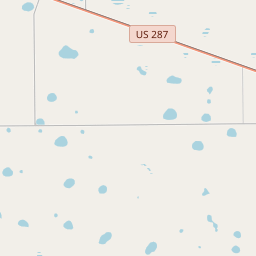Site of Warner Building
Historical marker location:






Erected at this site in 1909 by civic leaders Dr. William A. (1864-1934) and Phebe K. (1866-1935) Warner, the Warner Building played an important role in Claude's development. Designed by the Amarillo architectural firm of Heckman and Hartley, the building housed Dr. Warner's medical office, the Warners' Gate City Drugstore, public rest rooms, a barber shop, the "Claude News" newspaper office, a public reading room, a lodge hall, and rental office space. After a fire destroyed the building in 1915, the Warners reopened their drugstore at another location
As one of the most visible programs of the Texas Historical Commission (THC), historical markers commemorate diverse topics in Texas history, including: the history and architecture of houses, commercial and public buildings, religious congregations, and military sites; events that changed the course of local and state history; and individuals who have made lasting contributions to the state, community organizations, and businesses.
The Alamo, a mission in San Antonio, is perhaps the most famous historical site in Texas. It was the site of a key battle during the Texas Revolution in 1836.
The county was officially established in 1876 and named after one of the area's first settlers, Captain James P. Armstrong. During this time, ranching became the primary industry in the region, and cattle ranches flourished. The famous XIT Ranch, one of the largest cattle ranches in the world, spanned multiple counties, including Armstrong County.
In the late 1800s, the arrival of the Fort Worth and Denver City Railroad sparked growth and development in the county. Towns like Claude and Goodnight were established as railroad stations, attracting settlers and businesses. Agriculture also became significant, with crops such as wheat and corn being cultivated alongside the ranching industry.
The county experienced its fair share of challenges as well. Droughts and severe weather conditions often tested the resilience of the farmers and ranchers. Additionally, the arrival of the Dust Bowl in the 1930s devastated the agricultural industry and forced many families to leave the area in search of better opportunities.
Today, Armstrong County continues to embrace its agricultural roots while embracing modern advancements. The county's economy remains largely dependent on ranching and farming, with an increasing focus on sustainable practices. The historic landmarks, such as Charles Goodnight's Park and the Armstrong County Museum, offer glimpses into the area's past, ensuring that its rich history is preserved for future generations.
Armstrong County Timeline
This timeline provides a concise overview of the key events in the history of Armstrong County, Texas.
- 1876: Armstrong County is officially founded, named in honor of Martin Armstrong, a Texas Ranger and early settler in the area.
- Late 1800s: Ranching becomes the primary industry in Armstrong County, with cattle drives and open-range grazing becoming central to the local economy.
- 1890: The county seat is established in Claude, which quickly becomes a bustling town serving the surrounding rural community.
- Early 1900s: The discovery of oil in the Panhandle region sparks an economic boom in Armstrong County, leading to an increase in population and infrastructure development.
- 1921: The Armstrong County Courthouse is constructed in Claude as a symbol of the county's growth and prosperity.
- 1930s: The Great Depression hits the county hard, causing widespread economic hardship, but agriculture and oil production help sustain the community.
- 1940s-1950s: Armstrong County experiences a decline in population as people migrate to urban areas for job opportunities.
- 1970s: The county begins to focus on attracting tourism, particularly by promoting its scenic landscape and historic attractions such as Charles Goodnight's ranch.
- 1998: The Armstrong County Museum is established to preserve and showcase the history and heritage of the area.
- 2000s: Armstrong County continues to thrive as an agricultural community, with cattle ranching and farming being major economic activities. The county also benefits from oil and natural gas production.